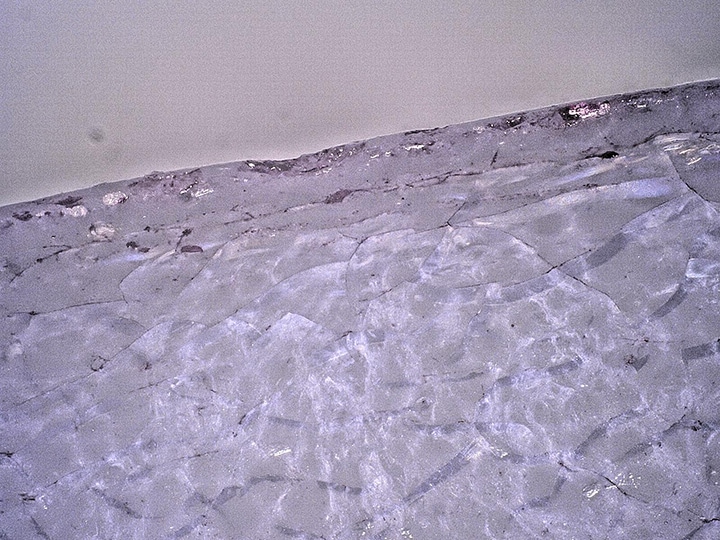Medical Device and Cosmetics Industries
Dental Implant Observation
A lot of medical equipment is used directly on human bodies, so they must provide high levels of safety and functionality.
This section introduces examples of observation of dental implants, which are often imaged by microscopes.
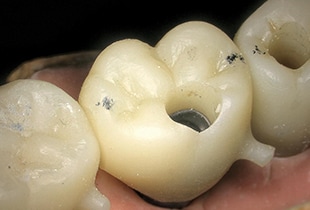
- What Are Implants?
- Dental Implant Materials and Characteristics
- Dental Implant Observation Examples Using Digital Microscopes
What Are Implants?
Implant is the general term used to refer to devices and materials embedded in the human body. Cardiac pacemakers, artificial joints, and dental implants embedded in the jawbone are examples of implants.
Names of dental implant parts
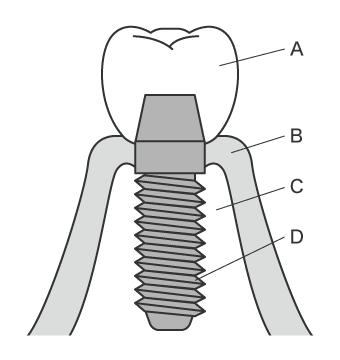
- A: Artificial tooth
- B: Gums
- C: Jawbone
- D: Implant
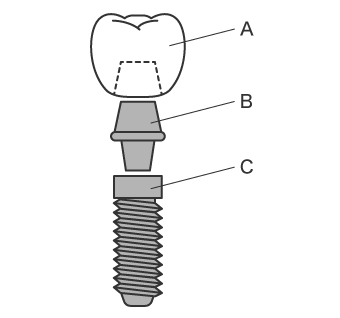
- A: Upper structure (artificial tooth)
- B: Abutment (connector)
- C: Fixture (dental implant)
Dental implant functions
- Upper structure (artificial tooth)
- The artificial tooth is secured on the abutment with cement or a screw.
- Abutment (connector)
- The part located between the implant and the artificial tooth is called the abutment. Generally, the abutment is secured on the fixture with a screw.
- Fixture (dental implant)
- The fixture is the dental implant that is embedded in the bone. It is also called the implant body.
Dental Implant Materials and Characteristics
The materials used in the upper structure (artificial tooth), abutment (connector), and fixture (dental implant) and the characteristics of these parts are listed below.
Upper structure (artificial tooth)
- Zirconia ceramics
- The strongest and most attractive artificial teeth are those made out of zirconia ceramics. This material is formed by baking ceramics onto zirconia, which is white, non-metallic artificial diamond. Its natural white colour and lustre make it impossible to discern from natural teeth, and it is also very hard and strong.
- All ceramic
- These artificial teeth are made entirely of ceramics. They possess the beautiful transparency and lustre characteristic to ceramics and do not deteriorate or discolour over time, providing a natural finish that is equal to natural teeth and lasts a long time. However, these teeth are weaker than teeth made of zirconia ceramics (explained above) and metal-bonded teeth (explained below), which are reinforced by a frame. As such, adjustments made to all ceramic teeth may be insufficient and these teeth may break or chip when used by people who clench their teeth with too much force.
- Metal bonded
- Metal-bonded artificial teeth are both attractive and durable. These teeth are formed by baking ceramics onto metal.
Just like zirconia ceramic and all ceramic teeth, these teeth hardly deteriorate over time. However, because they include a metal frame, these teeth are not as attractive as these other types in terms of transparency. Furthermore, the metal used may cause an allergic reaction in the patient, so caution is required. - Full zirconia ceramics
- These artificial teeth are made entirely of zirconia, which has excellent durability. Their characteristic is the hardness provided by zirconia, which is artificial diamond. They can be used for a long time with no discolouration or damage. However, this focus on durability makes this material inferior to ceramics in terms of the natural finish to their transparency and colour.
Abutment (connector)
- Titanium and zirconia
- The abutment connects the upper and lower parts.
Titanium is a strong material that does not rust easily, making it extremely durable. A disadvantage of this material is that should the gums recede or should a transparent upper structure be used, the metal becomes visible, lowering the attractiveness of the teeth.
Zirconia is a strong material that does not use metal, eliminating concerns of allergic reactions to metal. Its colour is also close to the white of natural teeth, ensuring that the connector does not stand out and making this material the most attractive among all current implant abutment materials.
Fixture (dental implant)
- Titanium
- This part is embedded in the jawbone. The material is titanium, which has the property of being able to bond with bone.
Dental Implant Observation Examples Using Digital Microscopes
The latest examples of observation images of dental implants using KEYENCE’s VHX Series 4K Digital Microscope are introduced below.
- Observation of artificial teeth
- The large depth of field allows entire teeth to be brought into focus.
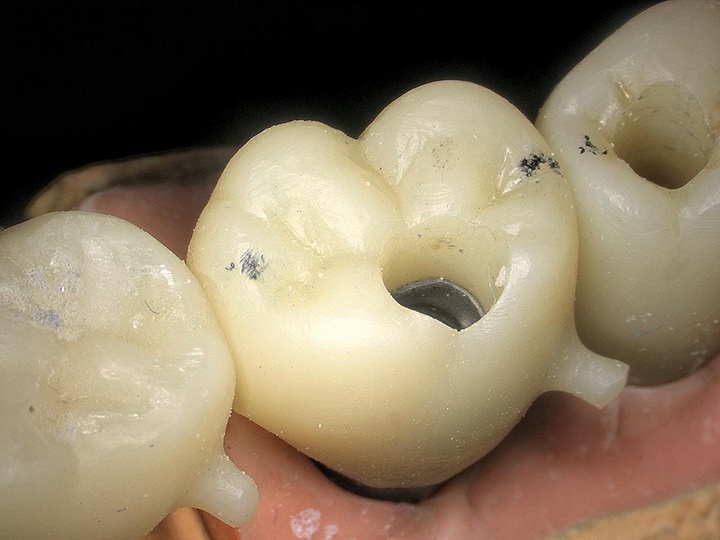
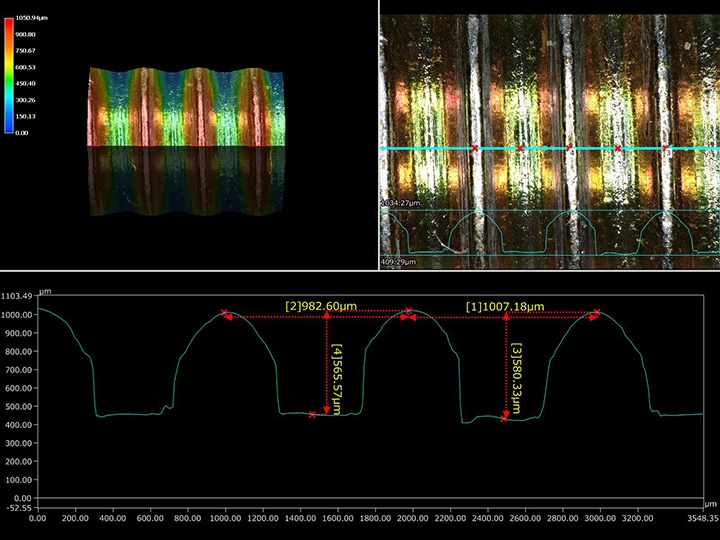
- Observation of cracks and chips on artificial teeth
- The HDR function removes glare to enable observation of surface conditions.
